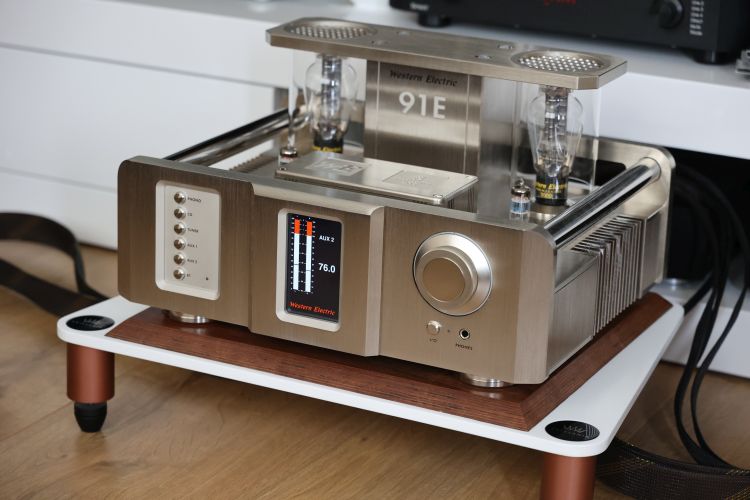
Sample supplied by atube-hifiimport
Retail prices in the Netherlands (incl 21% VAT):
91E amplifier in Black or Champagne: 17.250 euro
91E amplifier in Nickel: 17.850 euro (as reviewed)
Alternate Output Transformer Block: 1.000 euro
Matched pair 300B: 1855 euro
The story of Western Electric in a nutshell
Western Electric was originally established in 1869. At that time, inventor Elisha Gray and entrepreneur Enos Barton each contributed $2,500 and opened a shop in Cleveland, OH to make electrical parts. Their move to Chicago paved the way for a storied future that included Bell Telephone, Bell Labs, AT&T, and Westrex.
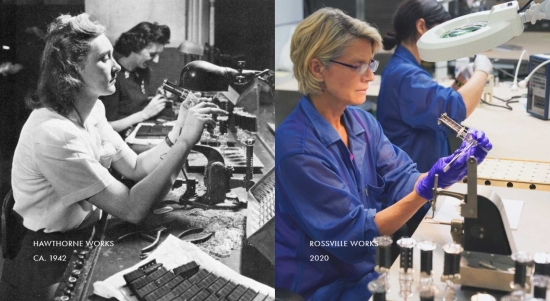
In 1938, Western Electric manufactured the first type 300B electron tube. It was a breakthrough power triode, but in those days it hummed away from behind a curtain in early Hollywood sound systems. The same things that served moviegoers back then—low noise, ultra-long life, sonic purity, and warmth—made it a standout tube for music lovers and vintage audio collectors as the years passed.
Deep into the age of the transistor, communities around the world in search of true, original, high-fidelity sound rediscovered the 300B and its exceptional performance. New amplifier designs brought the tube front and center but until recently, one could only rely on NOS 300-B tubes.
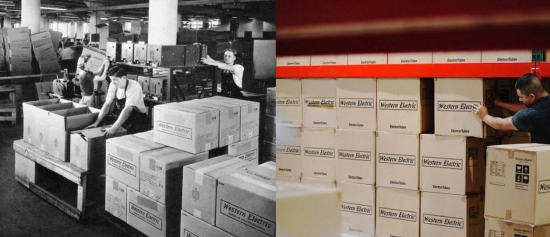
More recently, entrepreneur Charles Whitener, in partnership with AT&T, has recovered Western Electric and the Westrex Corporation and in 1997 resumed production of the first new 300-B triode tubes in Kansas City. They received universal praise and quickly became the gold standard.
In 2003, the company moved production of the 300-B tubes to Huntsville, AL, and through those years it served the Department of Defense with electron tubes and test kits. Besides tubes, Western Electric has also designed and developed High-End audio amplifiers, CD players, phono preamplifiers, along with other audio components.
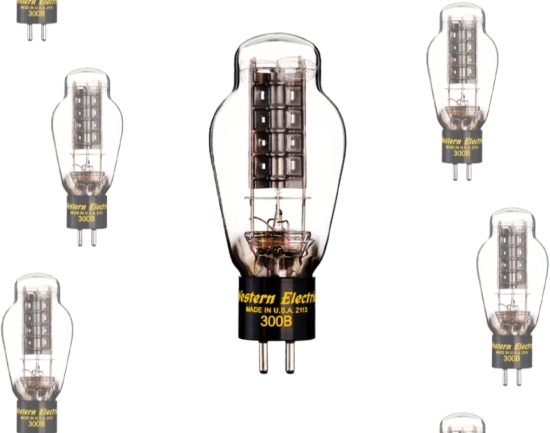
Today, the 300B is manufactured at the Rossville Works facility. This new factory home was custom-built to master the dozens of individual demands of tube making, from sealing the iconic glass bulb to the complex metallurgic processes within. Western Electric believes twenty-first-century listeners deserve twenty-first-century manufacturing standards.
Also manufactured in the Rossville Works facility is the subject of this review, the magnificent WE 91E integrated amplifier!
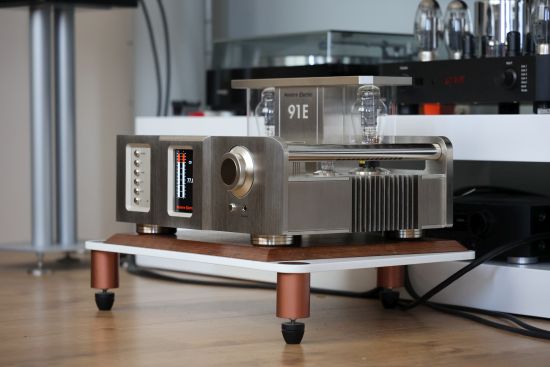
WE 91E
The 91E is a Class A, single-ended (SE), integrated amplifier that was inspired by its predecessor, the 91A. Compared to the original, the 91E offers double the power which is made possible by a completely new approach to SE amplifier design. Developed over five years, the 91E uses Western Electric’s patented steered current source technology, the parallel feed constant current source (SCCS). The unique parallel feed topology contributes half of the AC current to the plate (anode) of the 300B by modulating quiescent current. As a result, half of the power dissipation occurs in the tube, allowing for a greater output power of 20 watts per channel. The design employs 2x ECC81 Tubes for the preamp section and 2x 300B tubes for the power section. Microprocessors automatically bias the 300B tube pair each time the amplifier is powered on and no manual adjustment is necessary.
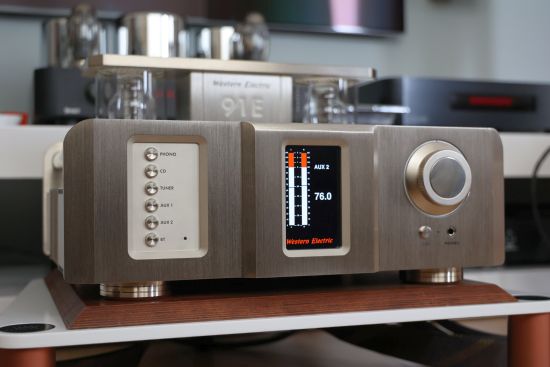
Whereas most tube amplifiers use multi-tap output transformers with two or three windings, the 91E uses a dedicated, user-swappable output transformer block that is optimized for a particular load. Single impedance transformers maintain lower winding capacitance that is normally impaired with multi-tap transformers. The amplifier’s retail price includes a single transformer block that can be specified at 4 Ohm or 8 Ohm and users can also purchase an extra block at extra cost.
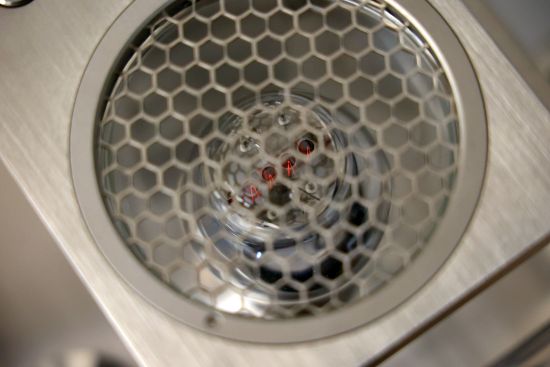
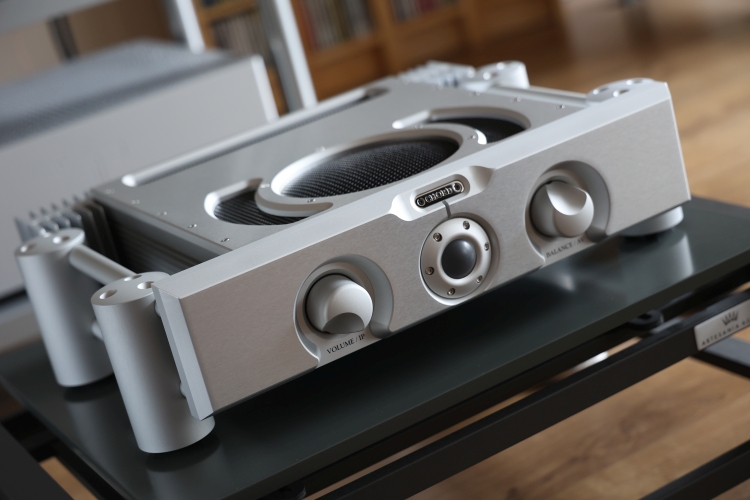
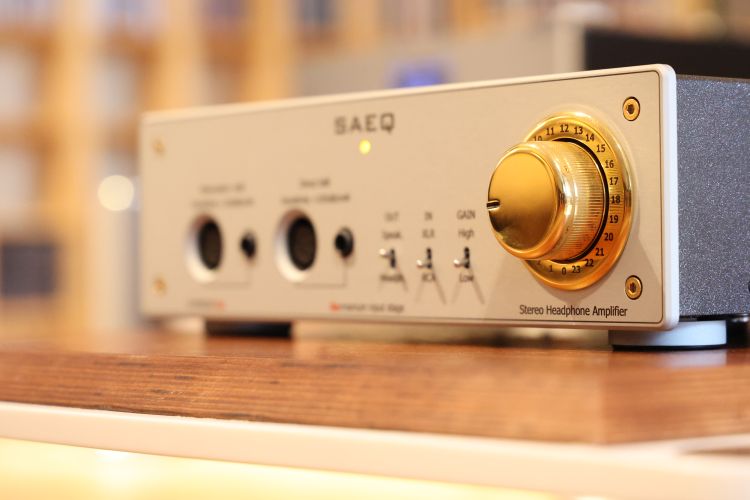
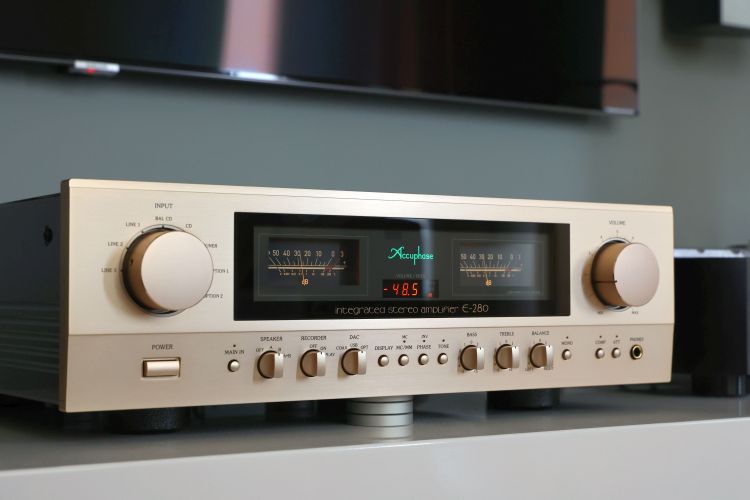
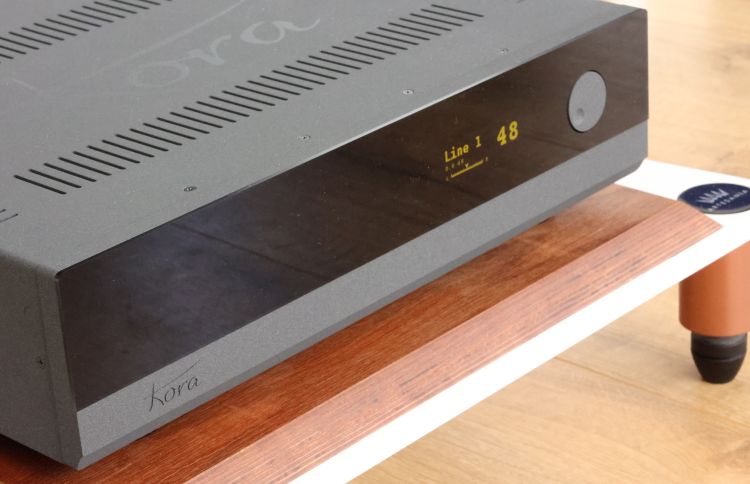
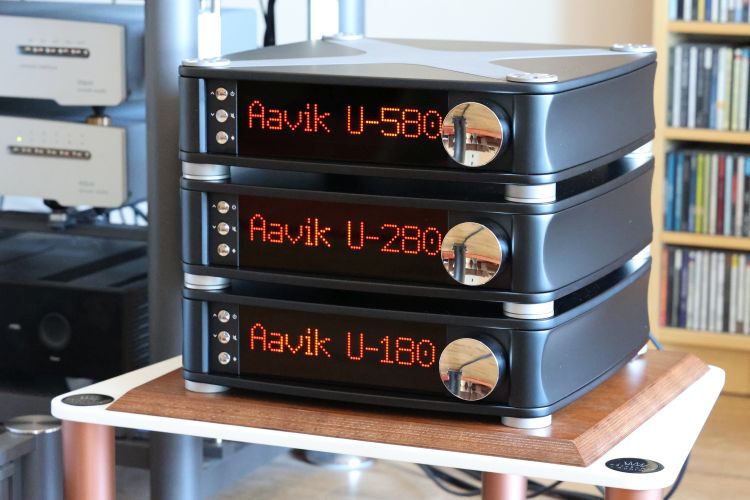
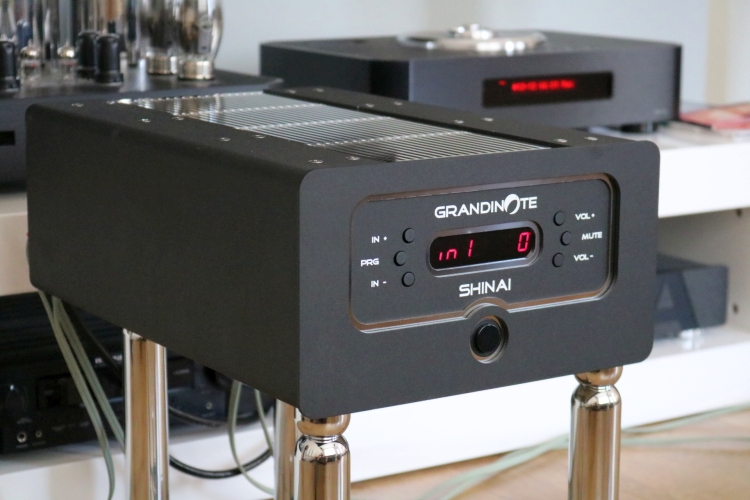
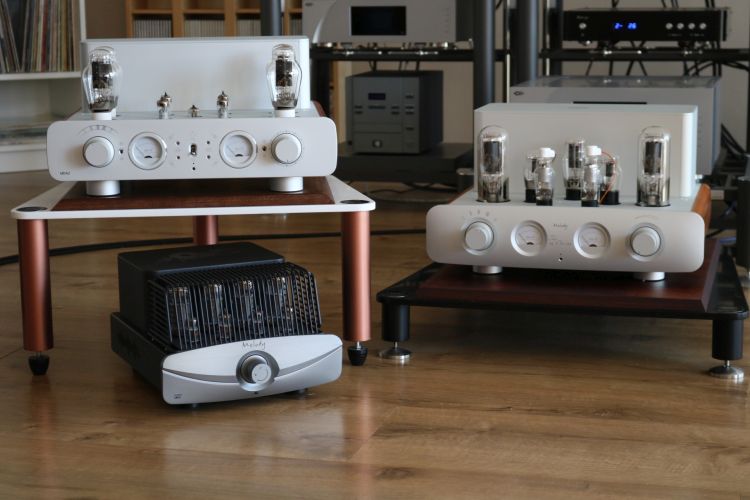
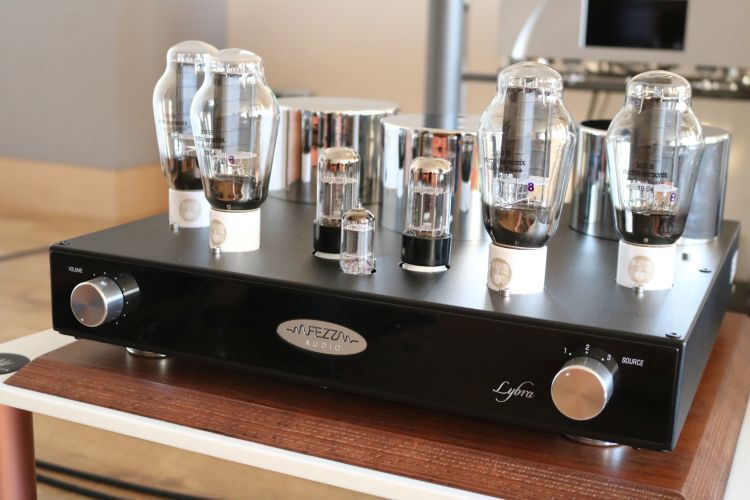
Nice to see a Weco product designed with beauty and technical precision again. I am over 65 and worked in telecom and radio for many years when Western Electric was in its later stages of usefulness. So great to see them “back”.Detroiter.
Christian,
Thank you so much for reviewing a new production WE product! This is literally the first review I’ve seen so quite a coup for you I imagine. 😉 Gorgeous amp but the amp, technical description, and review leave me with several questions:
Wringing 20 wpc from a pair of 300B tubes as the old saying goes “there is no free lunch” what compromises are made, tube life perhaps, to achieve this?
The comments from Tube Hifi Imports indicate the amp doesn’t have 3 transformers, so assuming it has a pair of output transformers does it have no power tranny? And if so how is the amp powered?
It is Bluetooth enabled, so I assume the amp then has an onboard Dac? Was this tested?
Sorry for all the questions Christian! This being such a gorgeous amp and a WE product I just want to know everything about it. 😉
Cheers,
Jon
Hi Jon, as for no free lunch, and with respect to the tube life I guess only time will tell, but I will say that the tubes do not become very hot at all. I’d swear that the pair on the Manley preamp were hotter.
I’m not sure what you mean by “does not have 3 transformers”. As far as I can tell, the amp does have 2-channel output transformers (the 4-Ohm or 8-Ohm removable block) and certainly an input transformer (presumably the big block between the tubes). Why would it need a third transformer?
I don’t know precisely how it achieves the higher power rating. The people who explained it to me also didn’t know. I think WE just don’t want to unveil too much about this. What I can add is that the heatsinks on the sides remained 100% cool during my tests.
There will indeed have to be a DAC onboard but it’s only for BT use. You cannot connect any digital sources to it. I did not test the BT performance as the antenna was not in the box. However, I forgot to add that A Tube informed me that their people were impressed with the BT sound quality, sounding full, smooth, and musical, like the amplifier itself.
Christian,
Thanks for your reply. And sorry for the confusion this line from the importer was what I saw but I think I understand it now.
“Because this amplifier (as Mr. Punter noted) doesn’t have 3 bulky transformers like most tube amplifiers it is also relatively light at 23 kilos.”
I was reading that as not 3 transformers but obviously it refers to the the OPT being smaller as they don’t have multiple output taps for different impedances.
Thanks,
Jon
Aha, yes, that makes sense:-) Also, apart from the WE91E using single-taps, in generic, SET amps tend to use extraordinarily large output transformers, which WE can also avoid due to their special implementation.
Beautiful piece of equipment. I would like to see traditional meters rather than LED displays. I believe this keeps it true to the vintage design aesthetic. Perhaps this would have added cost and required a different front panel design.
Analog meters are likely more affordable to implement and I agree that analog meters look really cool on many amps but I really like the digital display on the WE91E as it also alludes to the modern internal circuitry (hybrid tube/transistor).
WE explains in their advertisement that the output power derives not only from the 300B, but also from a current source. This would be a solid state “slave” to the tube’s transconductance curve. This is not a new topology, but perhaps new in the sense that the outstanding nature of the amp’s output is defined by a fantastic tube, and the additional horsepower is derived from a solid-state circuit. WE explains away the need for separate output transformers in an attempt to minimize the interwinding capacitance, but I suspect it is a must in getting the correct ratio of DC voltage, i.e, none on the output of the amp, with each impedance selected. This is necessitated because of the current follower’s interaction with the 300B circuit. I’m not able to go to court with these ideas, but I seriously doubt that WE is in any way compromising the performance or longevity of the 300B. Thanks.
Please change the above words, “power transformer,” to “output transformer.” Thanks!
done:-)